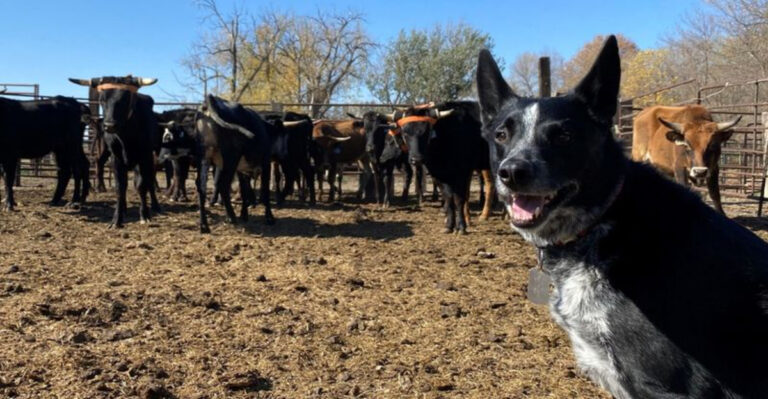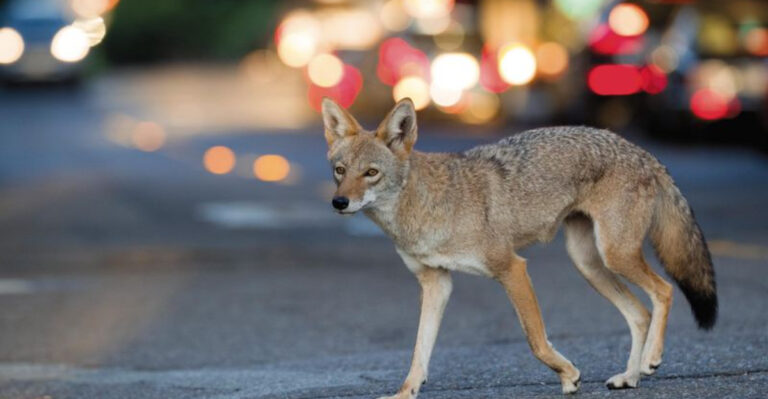The Indian Giant Squirrel: World’s Largest Squirrel With A Multicolored Coat
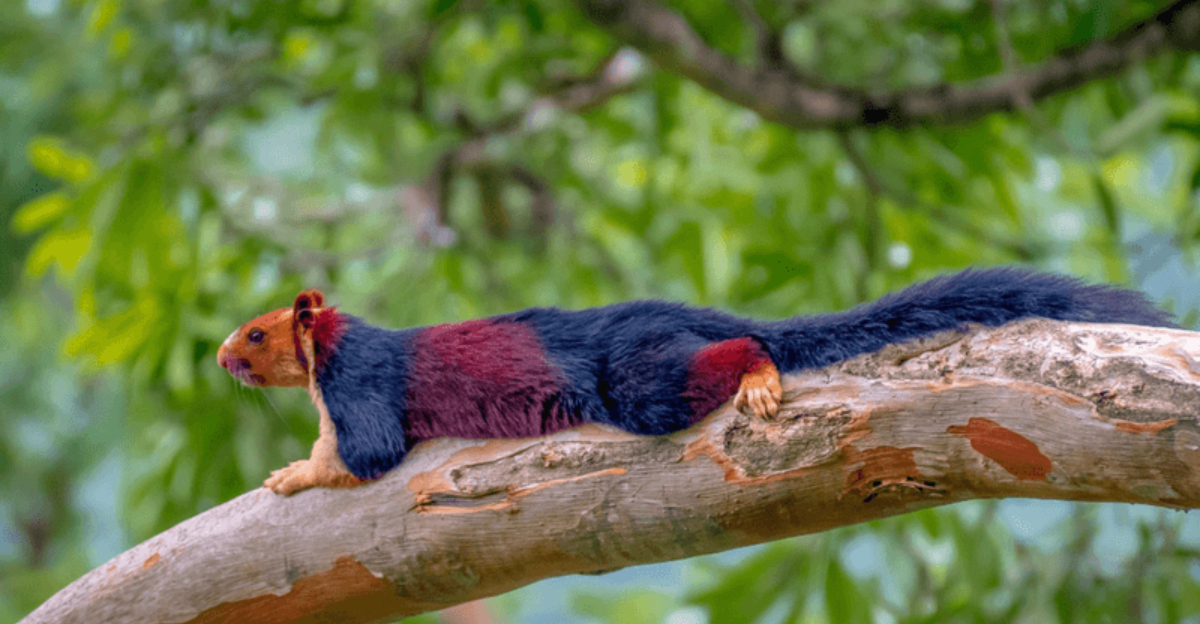
Imagine a squirrel the size of a house cat, sporting a rainbow coat that would make a peacock jealous! Deep in the forests of India lives the Malabar Giant Squirrel, a three-foot-long marvel that’s as colorful as it is rare.
These treetop acrobats have captured the hearts of wildlife enthusiasts with their stunning appearance and fascinating behaviors.
1. Rainbow Warriors Of The Canopy
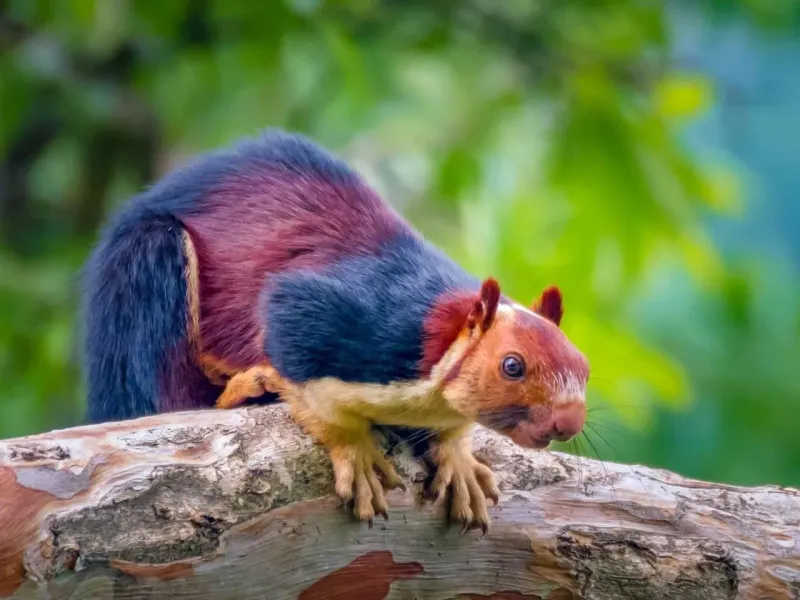
Sporting a dazzling mix of maroon, purple, orange, and cream, these squirrels look like they’ve been painted by an artist with a vibrant palette.
Their multi-colored coats aren’t just for show – the patches help them blend perfectly among sun-dappled leaves and colorful fruits, confusing predators looking for a squirrel-shaped snack.
2. Giants Among Squirrels

Measuring up to 36 inches from nose to tail, these mammoth rodents dwarf their common squirrel cousins.
Their bodies alone reach lengths of 14 inches, while their magnificent tails add another 2 feet. For perspective, that’s about three times longer than the average gray squirrel you might spot in a city park!
3. Fortress Builders
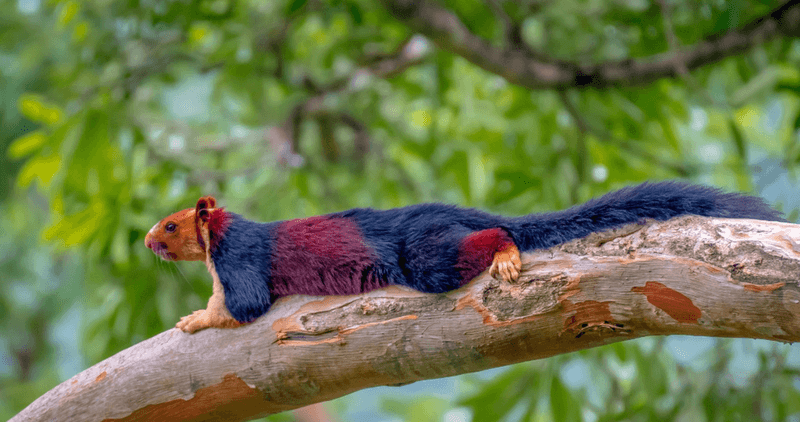
Unlike typical squirrel nests, these giants construct multiple globe-shaped homes throughout their territory.
Each nest – called a drey – is a masterpiece of engineering made from leaves, twigs, and plant fibers. Some nests reach two feet in diameter, with separate chambers for sleeping and storing food!
4. Aerial Acrobats
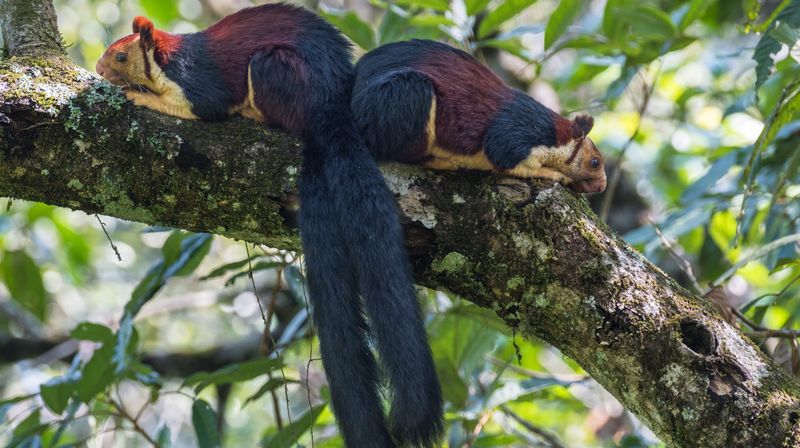
Leaping distances of up to 20 feet between trees, these squirrels rarely touch the forest floor.
Their powerful hind legs launch them through the air while their bushy tails act as both rudder and parachute. When they do land, sharp claws grip the bark instantly, preventing falls from heights that would seriously injure most animals.
5. Dawn-To-Dusk Lifestyle
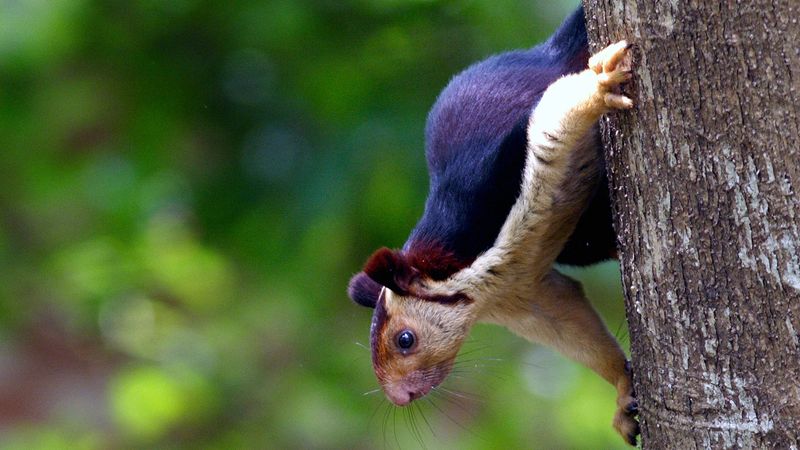
Early risers by nature, these squirrels begin their day with the first light, foraging until mid-morning. After a lengthy afternoon siesta during the hottest hours, they resume activity as temperatures cool.
Unlike many rodents, they’re strictly diurnal – you’ll never catch them scampering about after dark.
6. Vegetarian Gourmets
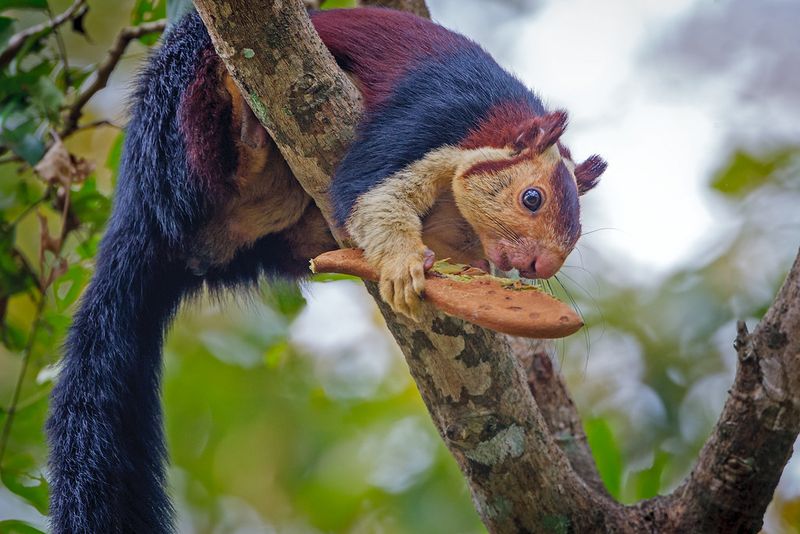
Forget plain old acorns – these sophisticated eaters enjoy a diverse menu of over 100 different plant species.
Fruits, flowers, nuts, bark, and even insect larvae make up their varied diet. During mango season, they’ll travel impressive distances just to feast on their favorite sweet treats.
7. Nature’s Gardeners
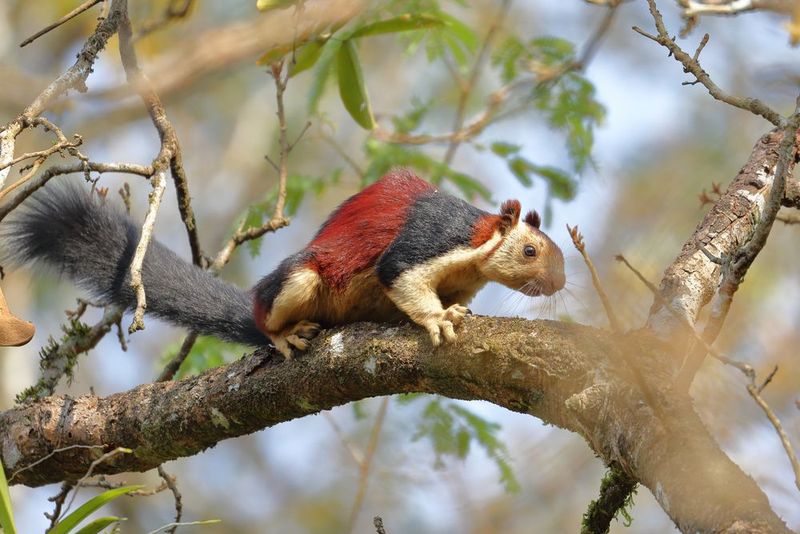
Accidentally dropping seeds as they eat, these squirrels play a crucial role in forest regeneration.
Many forgotten seed caches sprout into new trees, making them unwitting but effective forest planters. Their seed-spreading habits are so important that some tree species depend heavily on these colorful rodents for propagation.
8. Solitary Socialites

Despite living alone most of the year, these squirrels maintain complex social networks through vocalizations.
Their calls range from soft clicks to alarm barks that warn others of danger. During mating season, males temporarily abandon their solitary ways, engaging in spectacular chases through the treetops to win female attention.
9. Endangered Beauties
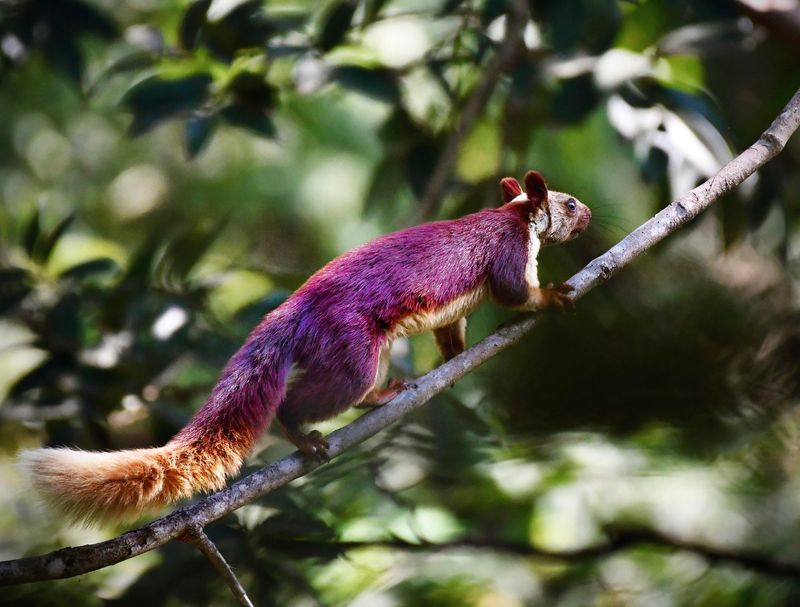
Habitat loss threatens these magnificent creatures, with deforestation claiming much of their native range.
Listed as vulnerable by conservation authorities, their population has declined by over 30% in recent decades. Some subspecies are critically endangered, clinging to existence in isolated forest fragments.
10. Masters Of Stillness

When danger lurks, these squirrels freeze completely, becoming virtually invisible against tree trunks.
Their patchwork coloration mimics dappled sunlight and shadow patterns. Some individuals will flatten themselves against branches, remaining motionless for hours until threats pass by, unaware of the colorful creature hiding in plain sight.
11. Cultural Icons
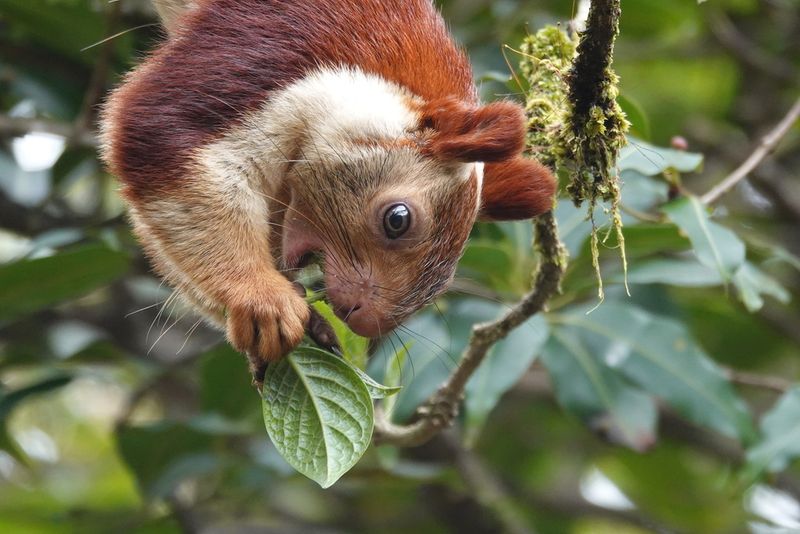
In Hindu mythology, these squirrels hold special significance, appearing in the epic Ramayana.
Legend claims Lord Rama blessed a squirrel that helped build a bridge, marking it with three stripes that represent his fingers. Many local communities consider harming these animals taboo, offering them traditional protection.
12. Baby Boom
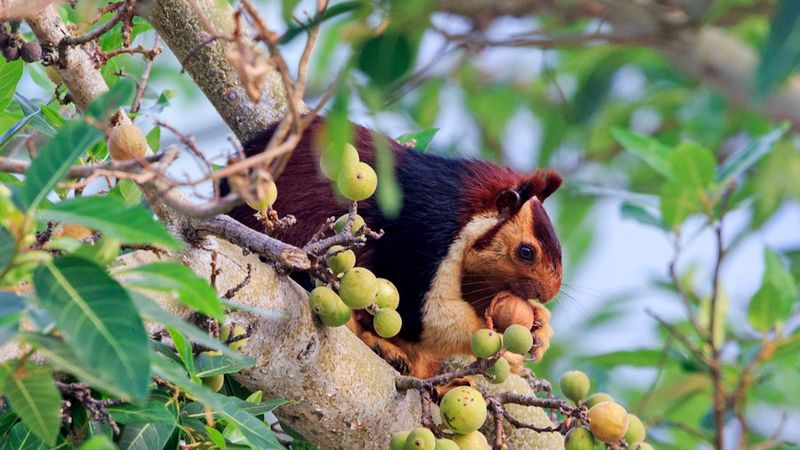
Female squirrels give birth to tiny, blind pups weighing just 1-2 ounces each.
Litters typically contain 1-3 babies that develop rapidly, opening their eyes after three weeks. By two months, the colorful youngsters begin exploring nearby branches, though they’ll stay with mom for nearly a year before striking out on their own.
13. Impressive Lifespans
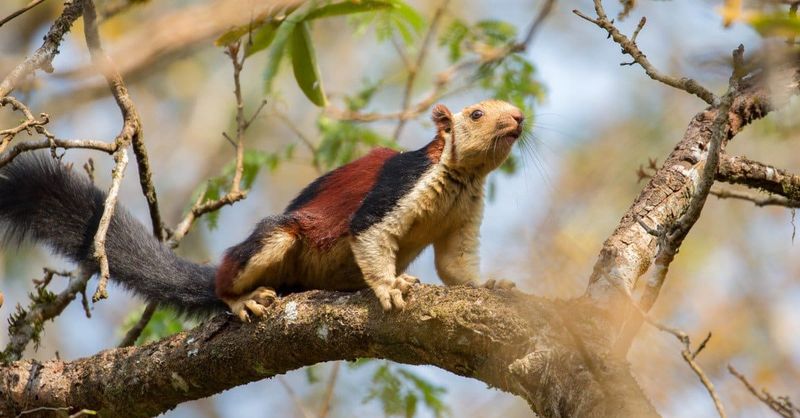
Living up to 20 years in protected environments, these squirrels outlive most rodents by decades.
Wild individuals typically survive 8-10 years, still remarkably long for their size. Their longevity likely results from their treetop lifestyle, which keeps them safely above most predators and disease vectors.
14. Regional Varieties
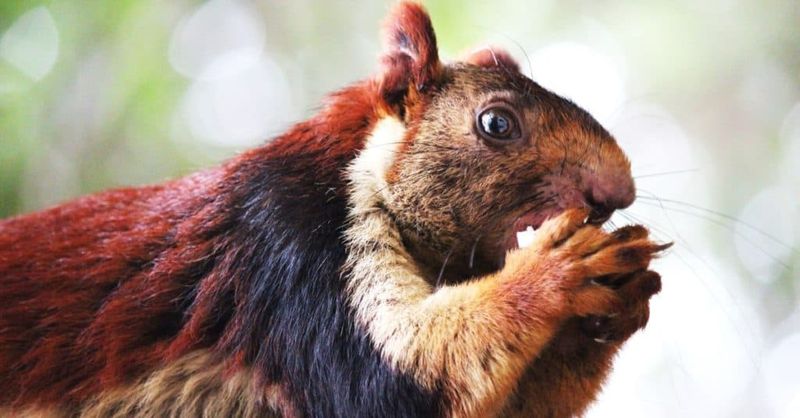
Scientists recognize three distinct subspecies, each with unique color patterns and habitat preferences.
The northern variety sports more cream and tan, while southern populations show deeper maroon and purple hues. These differences evolved as populations adapted to local conditions across India’s diverse forests.


